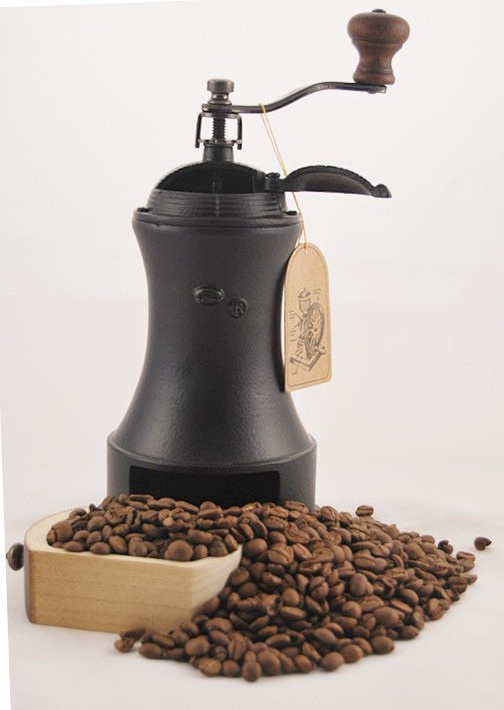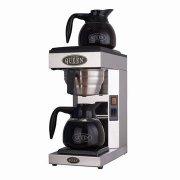The difference between manual and electric small bean grinder
We say that the most important indicator of coffee grinding is the speed and uniformity of the grinding. The so-called evenness is a relative index, and there is no so-called absolutely uniform grinder at present, so the evenness we are talking about refers to the thickness of the vast majority of ground coffee. Of course, the uniformity of professional coffee mill is better. But if you do not intend to spend so much money, but only want to use a hand mill or a small grinder to grind coffee, the grinding fineness you are adjusting is only a reference value, that is, most powders should be at this fineness. Therefore, friends who use manual bean grinders should observe the thickness of coffee powder after grinding coffee. Judging by the fineness of most coffee powder, it sounds a bit troublesome, but it's the only thing we can do for a grinder such as a hand mill.
It is a fact that a small electric bean grinder (such as a small grinder) grinds coffee with poor uniformity. So Uncle Dou suggested that when grinding beans, you should shake them up and down like drawing lots in a temple while grinding beans. The aim is to make the coffee beans as uniform as possible, but only as much as possible. But the biggest advantage of this machine is its fast grinding speed, which retains as much aroma as possible. However, the grinding speed of the hand mill is slow, and the aroma will volatilize a lot. If you must ask me to compare the advantages and disadvantages of these two kinds of bean grinders, I can only say that radish and cabbage have their own preferences, but as far as uncle bean is concerned, I would rather choose a small grinder, at least it can retain the aroma to the maximum extent.
What we have said so much is to pave the way for future operations. We say that the degree of grinding will be closely related to the extraction time and directly affect the taste. For example, if you grind coffee with a hand mill or a small grinder, the proportion of coffee is more thick, so if you want to get a mellow taste, you need to increase the soaking time. On the contrary, if the fine proportion accounts for more, and you want to pursue bright sour fruit and low-bitter coffee, then you must shorten the soaking time.
Having said so much, we must be on the premise of a previous condition before this conclusion can be established, that is, it is assumed that all the conditions do not change, but only one link. Such as: the same kind of coffee beans, the same water temperature, the same amount of water are unchanged, the thickness of finely ground coffee alcohol is higher, on the contrary, the acidity is bright.

Important Notice :
前街咖啡 FrontStreet Coffee has moved to new addredd:
FrontStreet Coffee Address: 315,Donghua East Road,GuangZhou
Tel:020 38364473
Related
- Beginners will see the "Coffee pull flower" guide!
- What is the difference between ice blog purified milk and ordinary milk coffee?
- Why is the Philippines the largest producer of crops in Liberia?
- For coffee extraction, should the fine powder be retained?
- How does extracted espresso fill pressed powder? How much strength does it take to press the powder?
- How to make jasmine cold extract coffee? Is the jasmine + latte good?
- Will this little toy really make the coffee taste better? How does Lily Drip affect coffee extraction?
- Will the action of slapping the filter cup also affect coffee extraction?
- What's the difference between powder-to-water ratio and powder-to-liquid ratio?
- What is the Ethiopian local species? What does it have to do with Heirloom native species?



